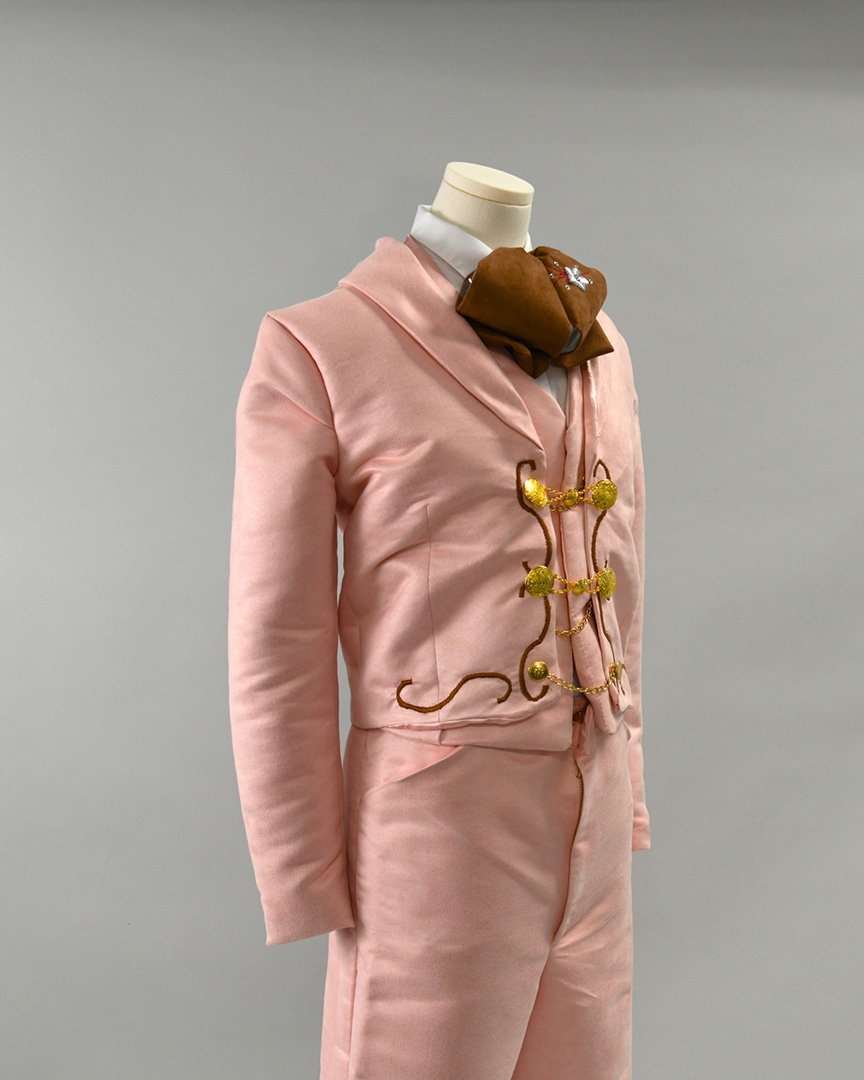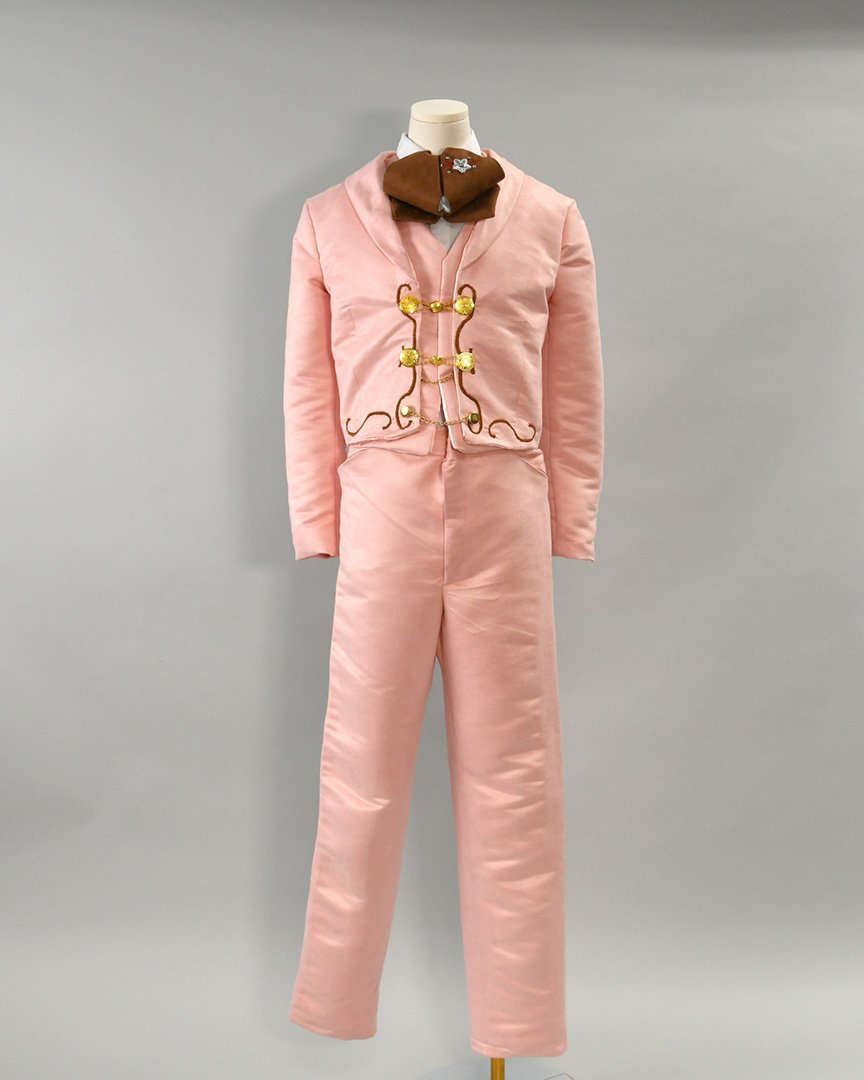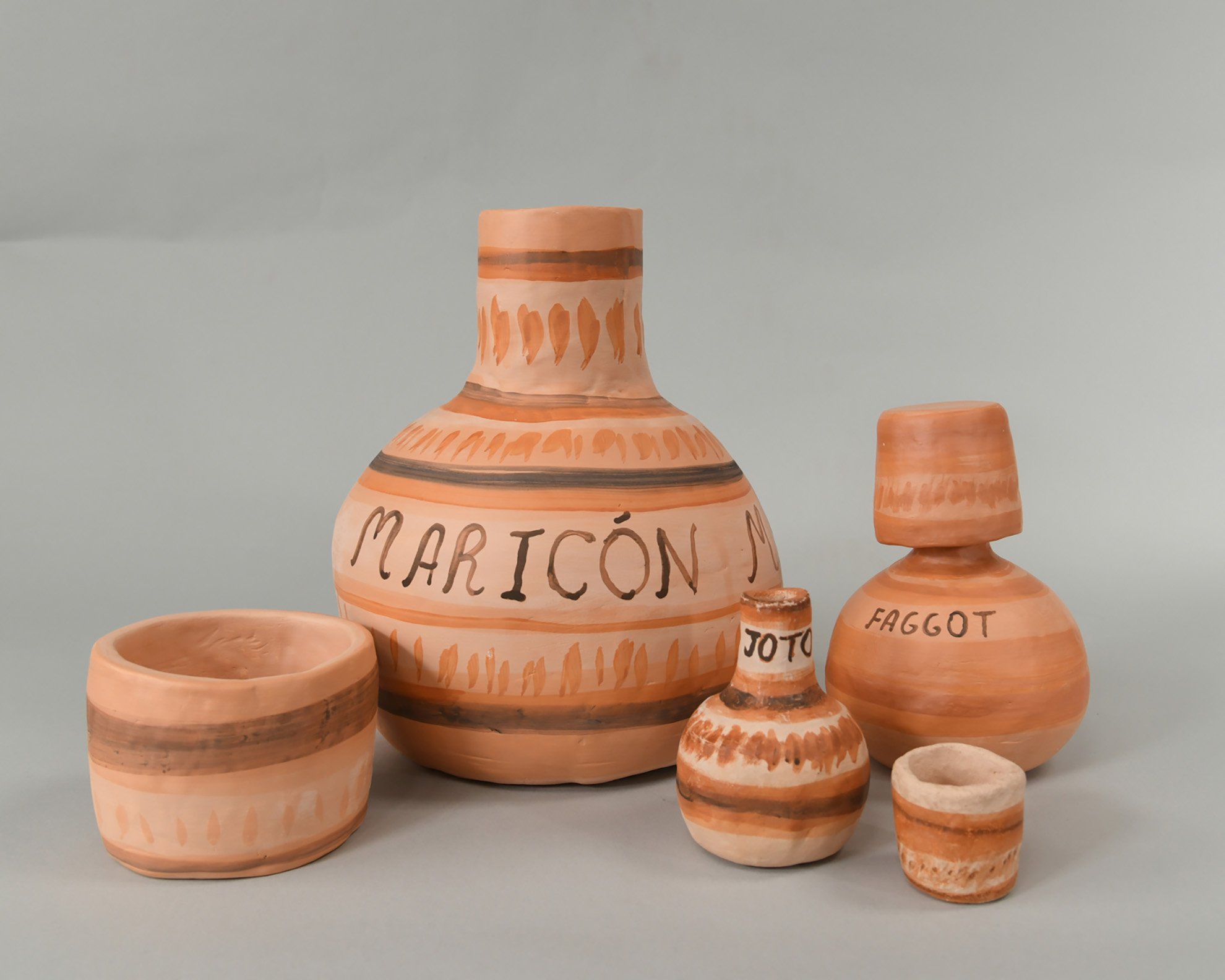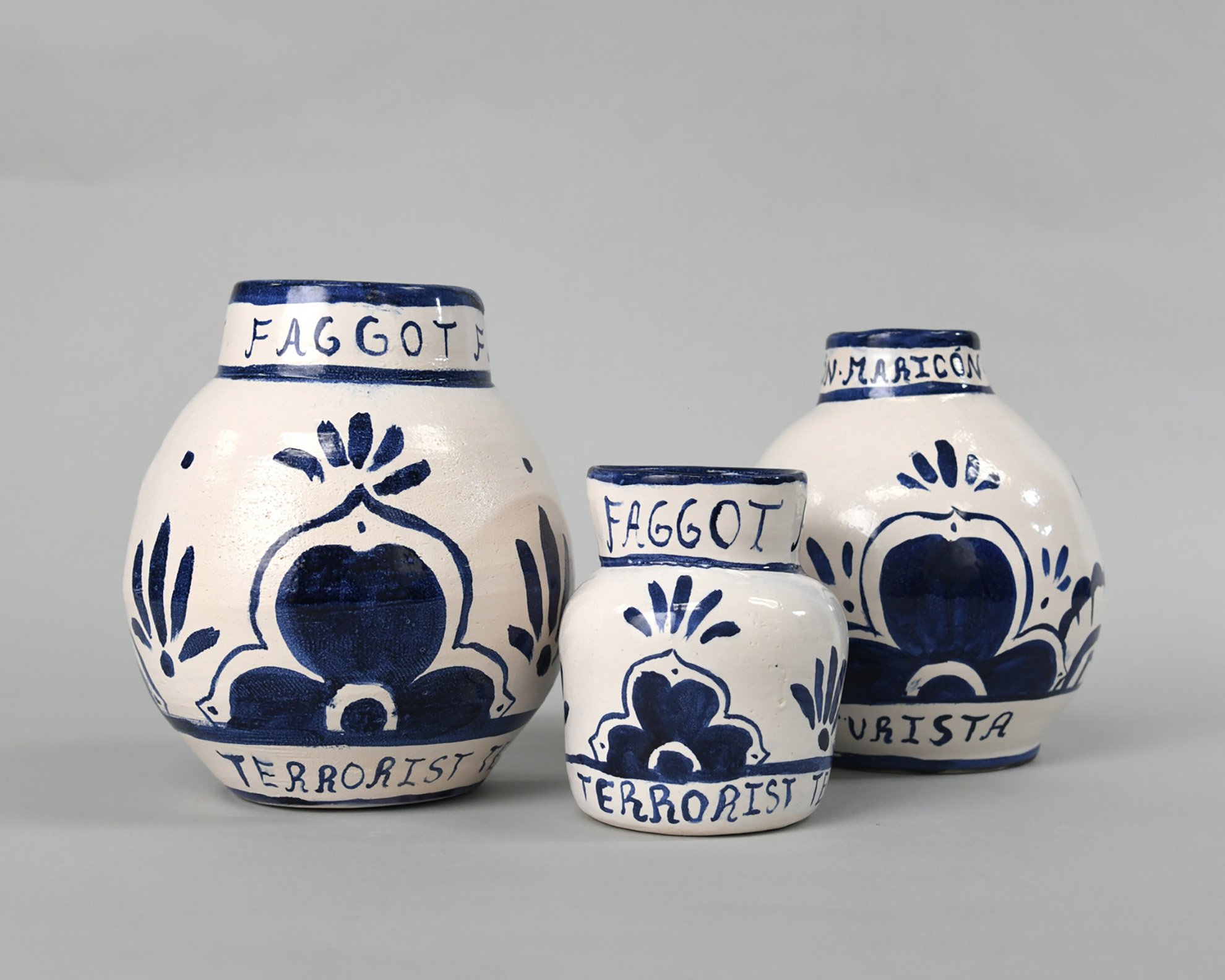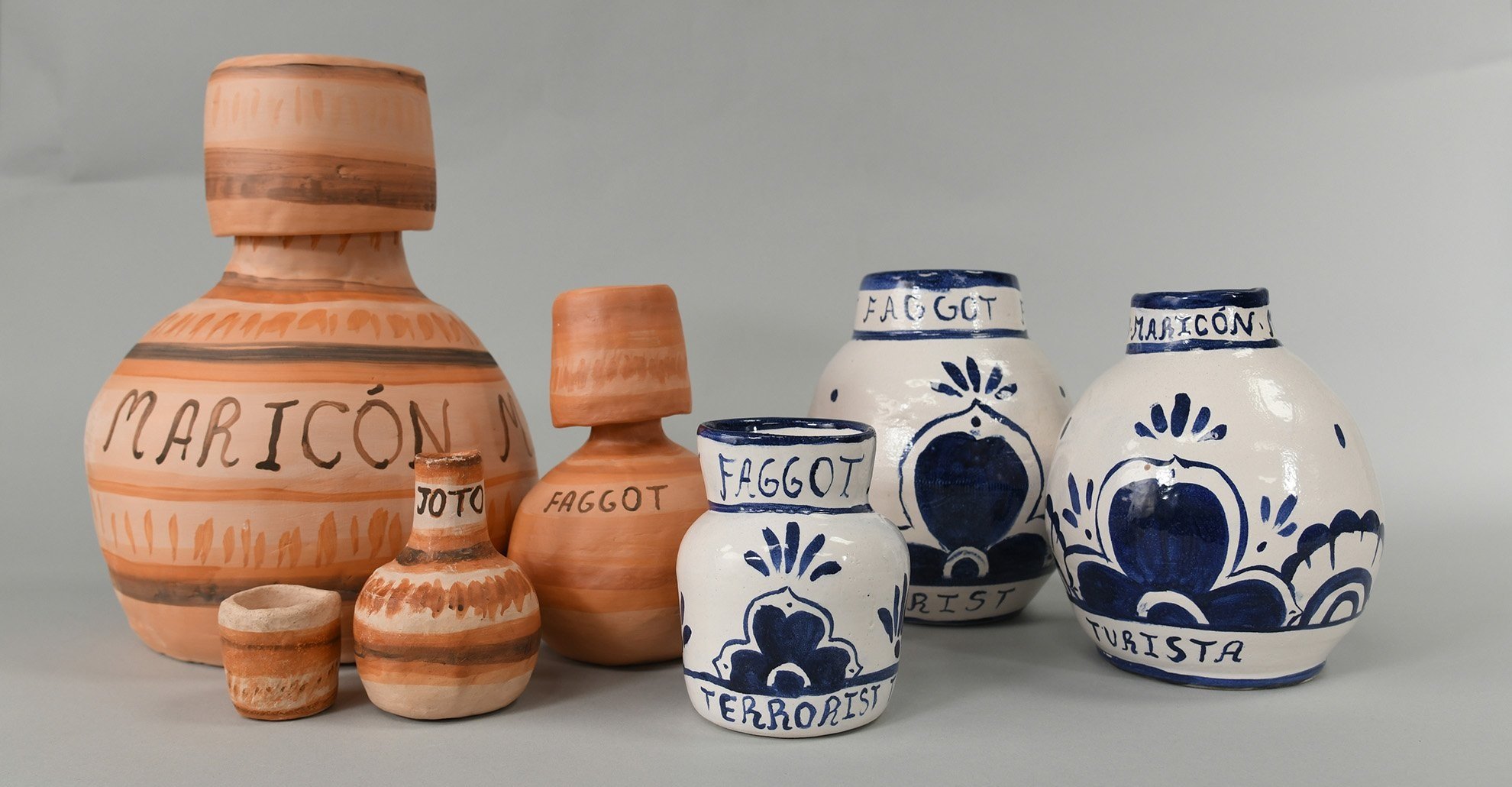
The Pink Charro
Abraham Mejia Ramirez
The Pink Charro uses traditional Mexican ceramic and textile forms to explore the struggles I’ve faced as a queer, bicultural individual. Ceramic vessels are decorated with traditional talavera and de barro patterns as well as slurs I have been called in my daily life in the USA and in Mexico. The traditional designs on the vessels call the viewer to look closely and see the harsh words I've encountered. These phrases meant to exclude my experience as not only a queer individual, but a Mexican and American.
The pottery flanks a handmade suit attributed with the Charro, an iconic Mexican cowboy. This figure is seen throughout Mexico, from rural towns to pop culture. While these suits were traditionally worn for sport, they can also be used for special occasions leading to ornate embroidery and the use of bright colors. Although heavily embellished garments, they would not commonly be seen in a color so overtly associated with femininity as the color pink; a color that calls into question the machismo of the charro. The suit is adorned with a belt buckle in the style of Talavera rendered in clay, questioning the fragility of masculinity.
The Pink Charro questions not just how a queer person fits in in rural Mexico, but how does a Mexican American fit in American society?
